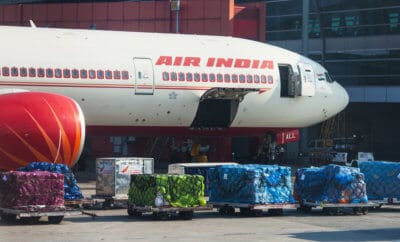Business
Indian Carriers Trying to Lure Back Pilots from Gulf

Representational Image
Wikimedia Commons
While the Indian aviation sector is growing, the shortage of pilots and commanders remains a concern for many domestic airlines.
Acute shortage of pilots is making domestic airlines launch efforts to lure Indians employed with West Asian carriers. While the Indian aviation sector is growing, the number of pilots and commanders remains a concern for many domestic companies.
In 2015, several cash-rich carriers from the Gulf countries had employed over a hundred pilots and many senior captains from several Indian airlines. One of the worst hit was IndiGo, which lost six pilots in a span of six months, the Hindustan Times reported, citing sources.
In a bid to woo pilots and first officers, carriers like SpiceJet and Vistara are conducting road shows in the Gulf, besides several Indian cities.
Aspiring to join India’s most sought after airline?
We’re coming to 3 cities with our recruitment drive for freshers and experienced female cabin crew. Stay tuned for more details. pic.twitter.com/oXL6iYA0AF— Vistara (@airvistara) November 30, 2017
“Indians, sometimes, find working conditions in the Gulf region too tough and monotonous,” a former IndiGo pilot who is now employed with the Dubai-based Emirates told Business Standard. “The system is very process-driven there and sometimes, you may earn cash but not the desired respect– this is precisely the lot the Indian airlines are trying to lure back.”
SpiceJet saw about 25 people leave the firm while 30 employees quit GoAir in the last two years. The exodus led the airline lobby group, Federation of Indian Airlines, to convince the Directorate General of Civil Aviation earlier this year to increase the notice period for commanders from six months to one year.
A senior SpiceJet official told Business Standard that their strategy was to woo pilots who are homesick and eager to come back. “I don’t think we are offering the same pay, perks that the Gulf carriers provide. We are trying to attract pilots who are eager to come back home,” he said.
Indian airlines have an order book of over 900 aircraft, aviation consultancy firm CAPA said earlier this year. SpiceJet aims to have more than 200 aircraft added to its fleet from June next year onwards. Vistara also plans to place an order of 100 aircraft as it gets ready to fly international in mid-2018.
Indian airlines are also suffering from an acute shortage of commanders. SpiceJet, for one, is looking to employ commanders for its existing fleet of Boeing 737G NG and 737 max fleet. The primary reason for this shortage is the additional training and requirement for additional flying hours for a first officer to be promoted to a commander’s position. A first officer can only be upgraded to a commander over a period of three to six years and that too depends on the training equipment of the airlines. The officer also needs to fly 2,500 hours before he is upgraded to the post of a commander.
An Indian commander who works for Qatar Airways said that job stability was one of the factors that prompted them to go to the Gulf countries, Business Standard reported. “Working in the Gulf region allows flying wide-body aircraft that always remains very attractive,” he said. “Job stability is another major driver, given that Indian carriers continue to remain vulnerable given their financial constraints. Except IndiGo and may be Vistara, growth in other carriers remains limited.”
Many pilots say that the wide career scope in West Asia may keep them there and it may not be easy for Indian airlines to lure them back from the Gulf region.



